Traditional Clothing in Maharashtra
MAHARASHTRIAN CLOTHING CULTURE is a vivid reflection of the state’s rich cultural heritage and diverse history. Both men and women in Maharashtra have distinct traditional attire that varies across different regions and communities within the state.
Traditional Clothing for Women
1. Nauvari Saree
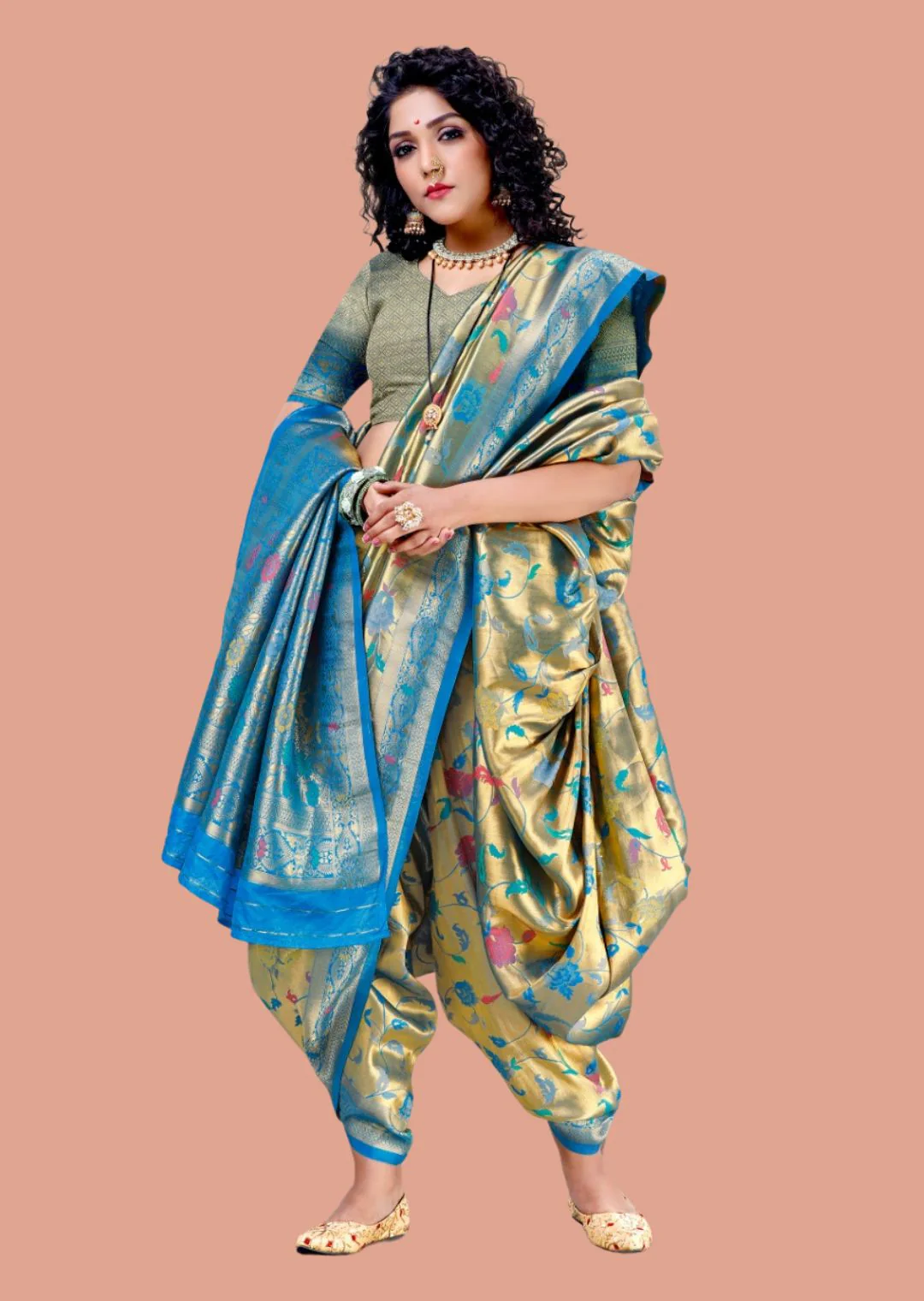
- Description: The Nauvari Saree is the most iconic traditional garment for women in Maharashtra. “Nauvari” translates to “nine yards,” indicating the length of this saree. Unlike the conventional saree, which is usually six yards long, the Nauvari Saree is nine yards and is draped in a unique style that resembles a dhoti or pants.
-
Draping Style:
- The Nauvari Saree is typically draped without a petticoat, and the lower portion is pleated like a dhoti, while the upper part is draped over the shoulder. This allows for greater freedom of movement, which was essential for women who participated in activities like farming or even warfare in history.
- The pallu (the loose end of the saree) is often draped over the shoulder and sometimes used to cover the head, especially during religious or ceremonial occasions.
- Occasions: The Nauvari Saree is commonly worn during festivals, weddings, and religious ceremonies. It is also worn by women in rural areas as daily wear.
2. Paithani Saree
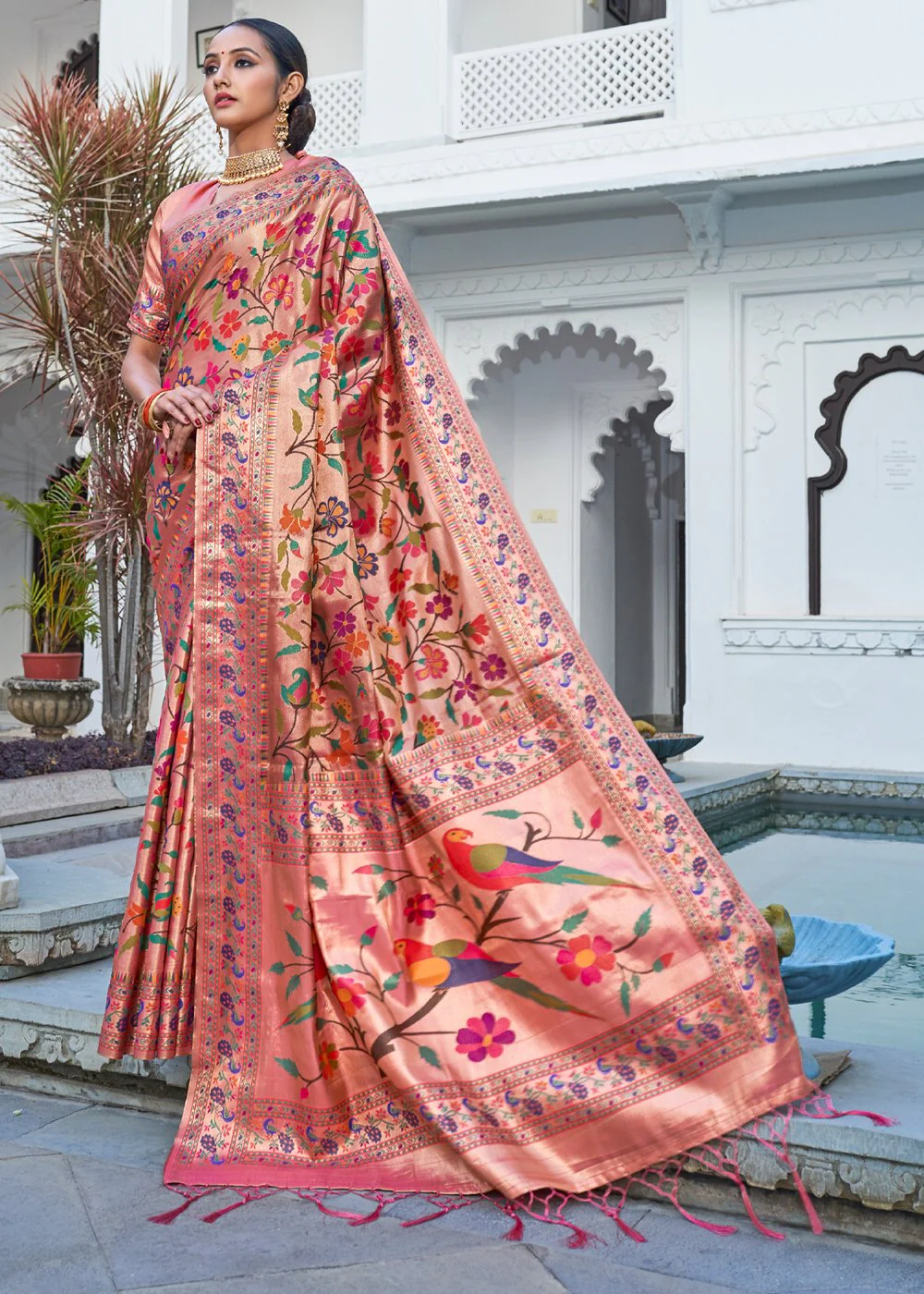
- Description: The Paithani Saree is a luxurious and traditional saree that originates from the town of Paithan in Maharashtra. It is known for its rich silk fabric and intricate handwoven designs.
-
Design and Motifs:
- Paithani Sarees are characterized by their vibrant colors, often featuring rich gold and silver Zari work. The borders and pallu of the saree typically showcase elaborate motifs such as peacocks, lotuses, and vines.
- The sarees often feature a signature “Brocade” weaving technique, where the patterns are woven directly into the fabric rather than being embroidered.
- Occasions: Paithani Sarees are considered a symbol of wealth and status and are often worn by brides or during major celebrations like Diwali, Ganesh Chaturthi, and weddings.
3. Choli
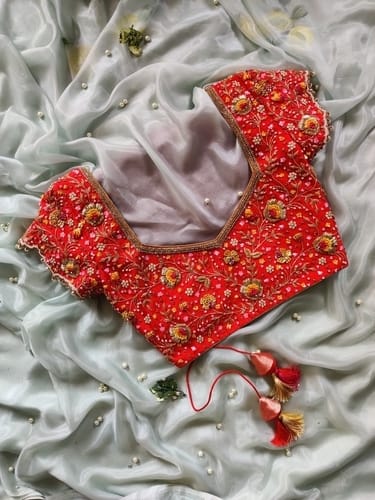
- Description: The Choli is a fitted blouse that is worn with the Nauvari, Paithani, or any other type of saree. The Choli in Maharashtra often has a simple, practical design, especially in rural areas, but can be more ornate in urban and festive settings.
- Design: The Choli can vary in length and sleeve style, with shorter sleeves and fitted designs being more common in traditional attire. For formal occasions, the Choli may be decorated with embroidery, mirror work, or Zari.
Traditional Clothing for Men
1. Dhoti
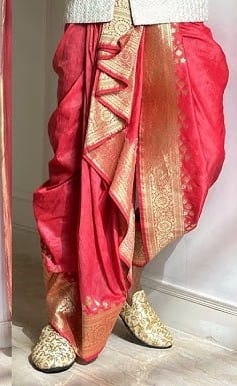
- Description: The Dhoti is the traditional lower garment for men in Maharashtra, made from a long piece of cloth that is wrapped around the waist and legs and tied at the waist.
- Draping Style: The Dhoti is typically tied in a way that resembles trousers, allowing for ease of movement. The ends of the Dhoti are often tucked in at the front and back, giving it a clean and structured look.
- Fabrics: Dhotis are usually made from cotton or silk, depending on the occasion. For daily wear, cotton dhotis are common, while silk dhotis are reserved for special events.
2. Kurta
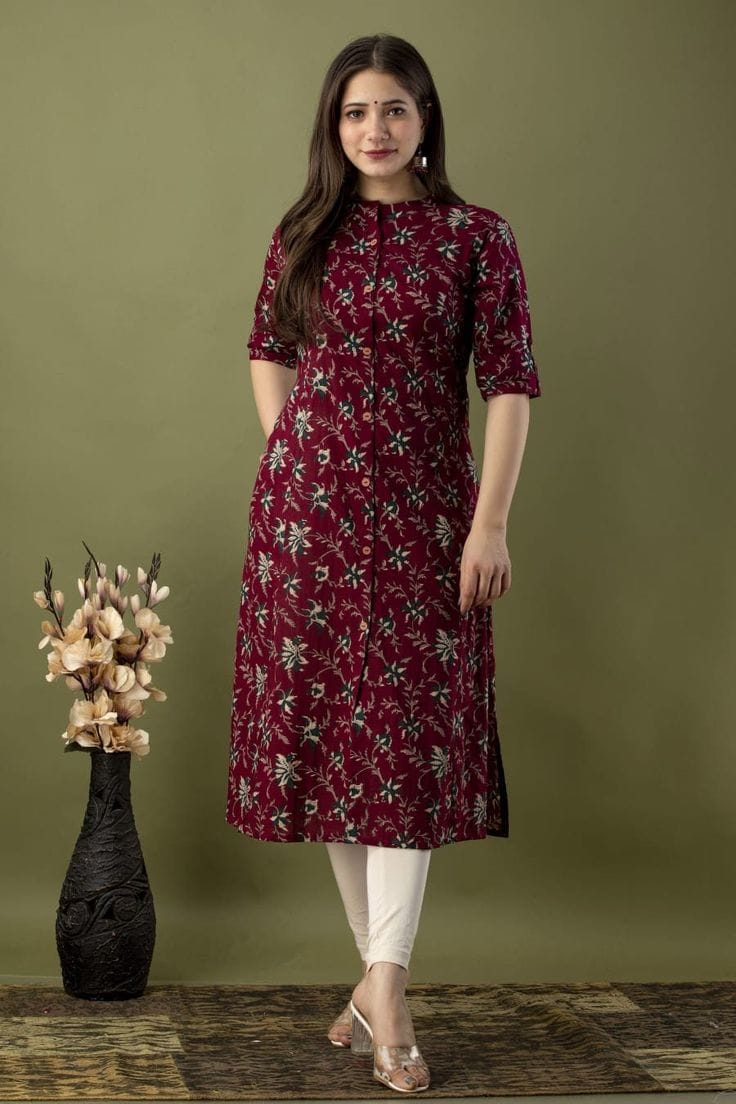
- Description: The Kurta is a long tunic that is worn over the Dhoti. It is usually knee-length and can be made from various fabrics, such as cotton, silk, or linen.
-
Design:
- Kurtas can be simple or elaborately designed. For everyday wear, kurtas are usually plain and made of cotton. For special occasions, silk kurtas with embroidery, Zari work, or other embellishments are common.
- The kurta is often paired with a jacket called a Sadara or Bandi for formal occasions.
3. Pheta
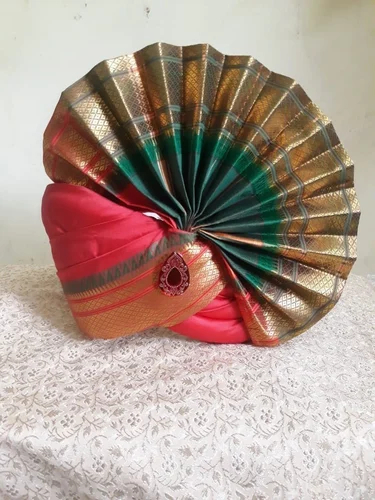
- Description: The Pheta is a traditional turban worn by men in Maharashtra. It is a symbol of honor and respect and is an integral part of the traditional male attire.
-
Design and Styles:
- The Pheta is usually made from a long piece of cloth, about 3 to 6 meters in length, and is wrapped around the head in various styles. The style of wrapping and the color of the Pheta can signify the wearer’s region, community, or even social status.
- For instance, a Pheta in saffron color is often worn during weddings, festivals, or political gatherings, symbolizing pride and valor. In some regions, the Pheta may also be white, indicating purity and simplicity.
- Occasions: The Pheta is worn during weddings, religious ceremonies, and other important events. It is also worn by political leaders and village heads as a mark of authority.
4. Short Kurta(Sadara)
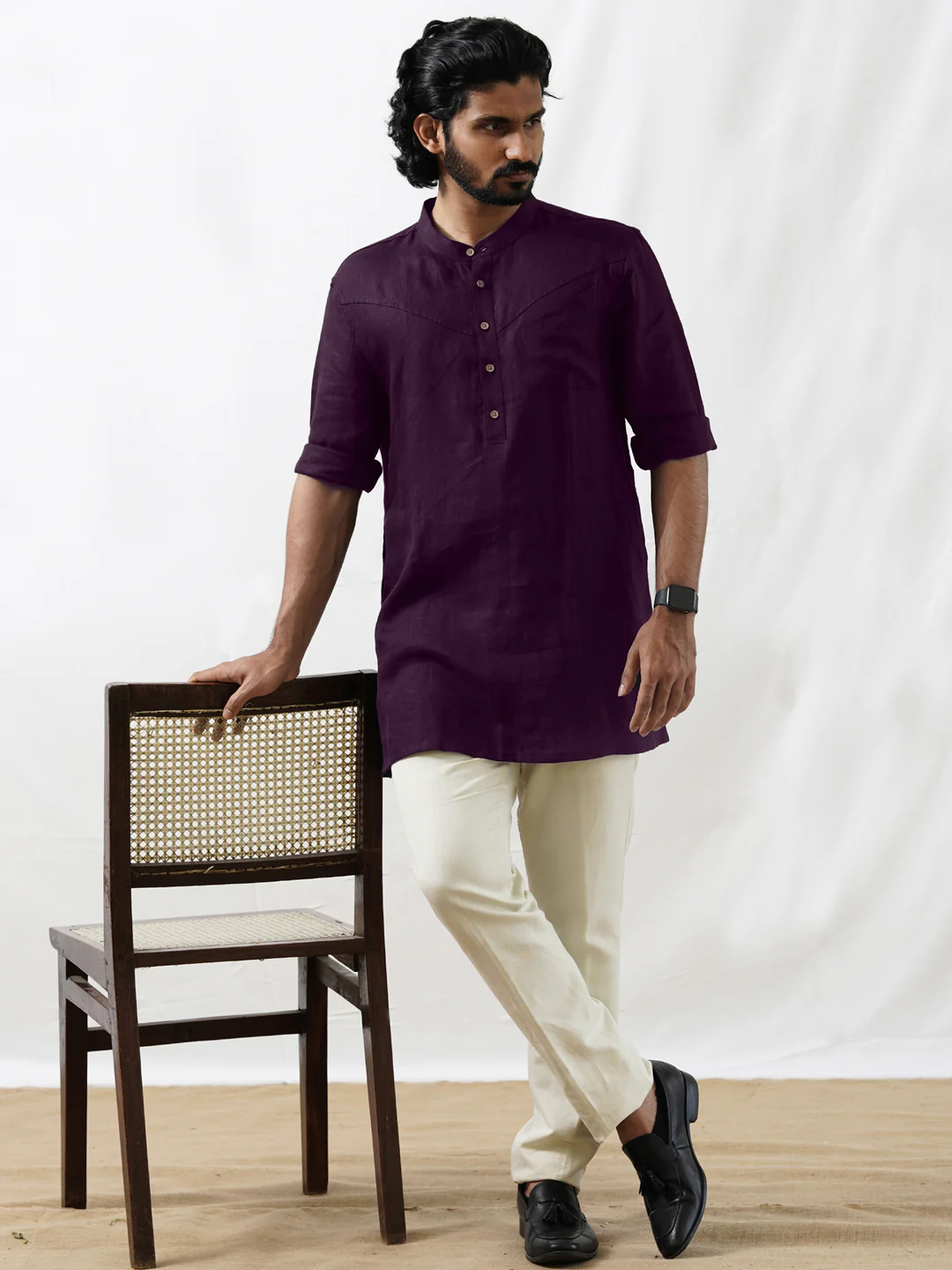
- Description: The Sadara is a traditional jacket that men wear over the kurta. It is similar to a waistcoat and adds a formal touch to the attire.
- Design: The Sadara is usually sleeveless and made from rich fabrics like silk or brocade, often featuring minimal embroidery or decorative buttons.
Festive and Ceremonial Attire
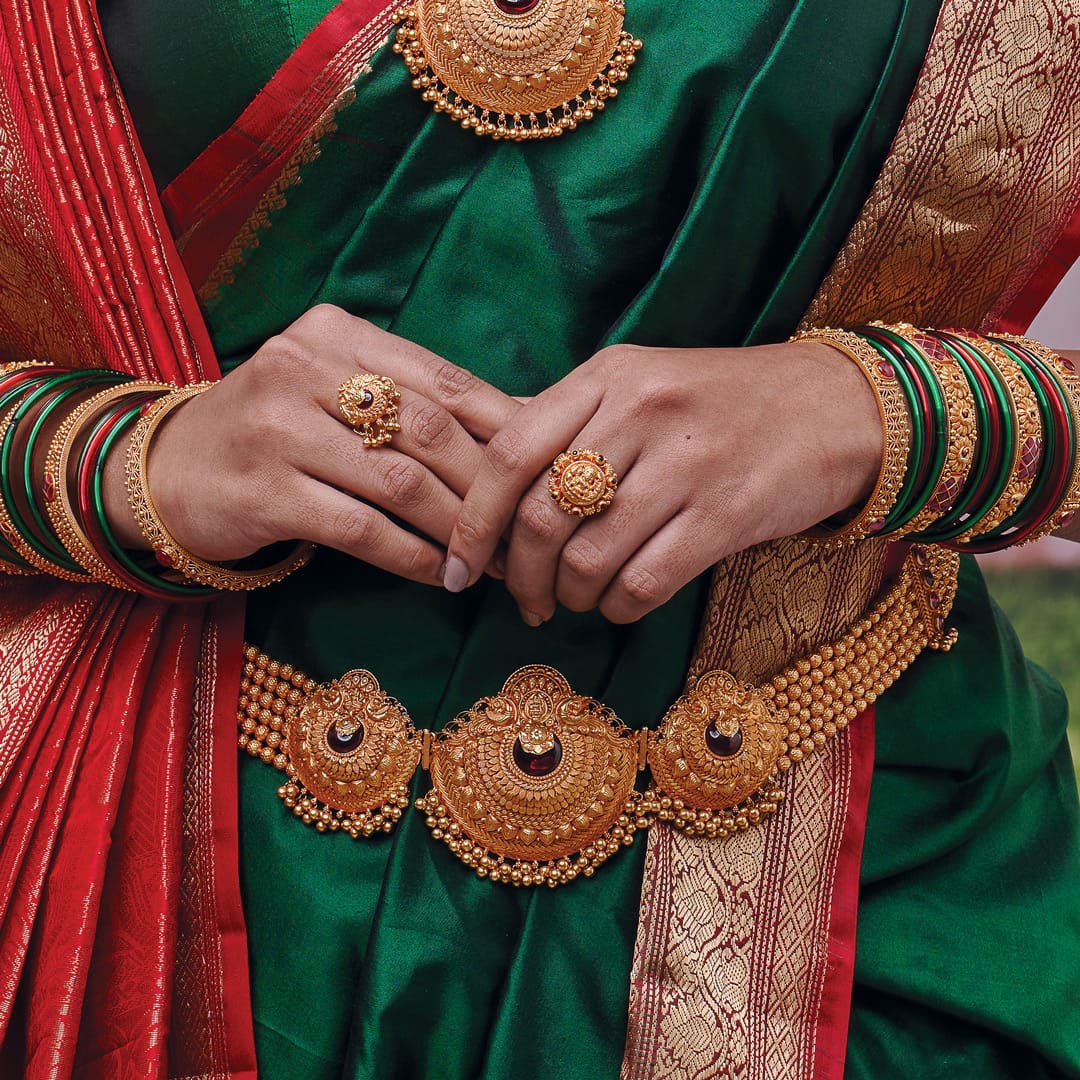
- For Women: During festivals like Ganesh Chaturthi, Gudi Padwa, and Diwali, women often wear the Nauvari Saree, Paithani Saree, or other traditional sarees, accompanied by gold jewelry such as Nath (nose ring), Mundavalya (a string of pearls or flowers tied across the forehead), and Kolhapuri Saaj (a traditional necklace).
- For Men: Men typically wear a silk Dhoti and Kurta paired with a Pheta during festivals and weddings. In some regions, men also wear Sherwanis or Achkans (long coats) for weddings and other formal events.
Kolhapuri Footwear
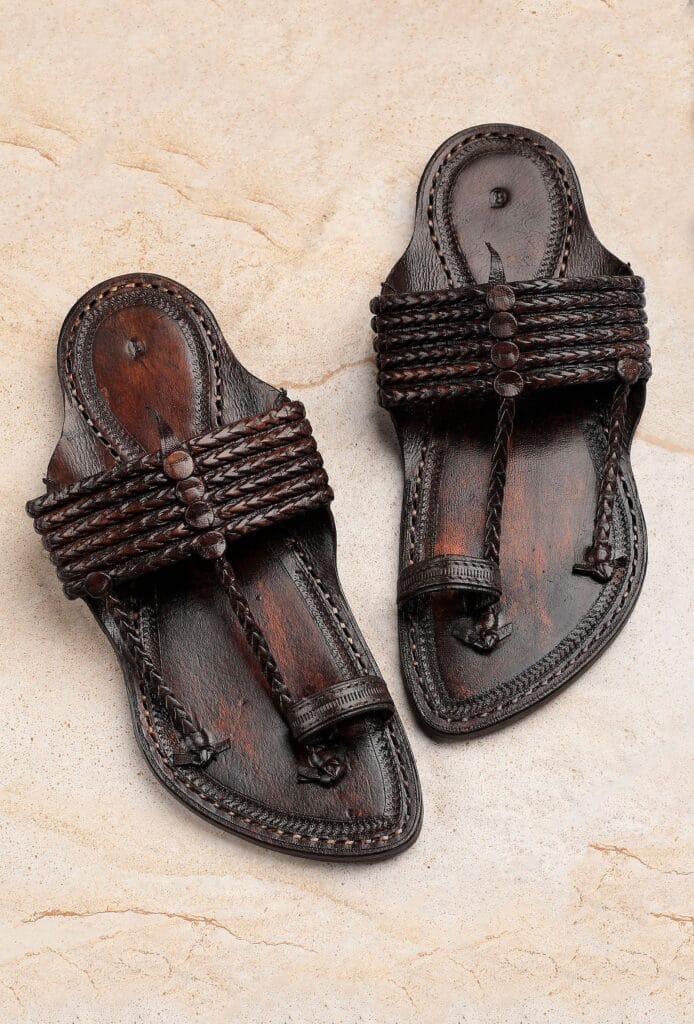
- Description: Kolhapuri Chappals are traditional handcrafted leather sandals from Maharashtra, particularly from the town of Kolhapur. They are known for their durability, comfort, and unique designs.
- Design: Kolhapuri Chappals are usually open-toed and have a flat sole. They are traditionally made from processed leather and can be plain or decorated with intricate designs and braids.
- Usage: Kolhapuri Chappals are popular across India and are worn by both men and women. They are versatile and can be paired with both traditional and contemporary outfits.
Cultural Significance
- The traditional clothing of Maharashtra is not just about fashion but is deeply connected to the cultural and social identity of the people. Each piece of clothing, whether it’s the Nauvari Saree, Dhoti, or Pheta, carries historical and cultural significance, reflecting the values, traditions, and lifestyle of the region.
- Clothing in Maharashtra also varies based on geography and community, with distinct styles seen in regions like the Konkan coast, Marathwada, Vidarbha, and the Western Ghats.
In summary, traditional clothing in Maharashtra is a beautiful blend of practicality, cultural heritage, and artistic expression. Whether it’s the iconic Nauvari Saree or the regal Pheta, these garments continue to be a vital part of Maharashtrian identity, worn with pride during festivals, ceremonies, and everyday life.
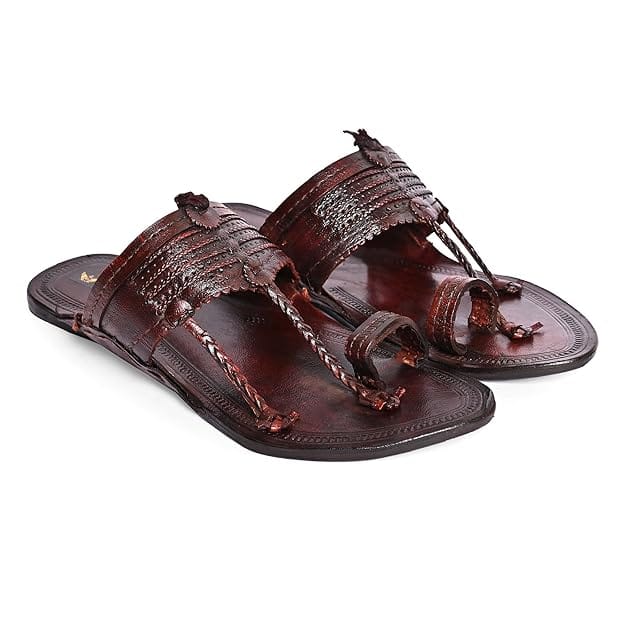
Kolhapuri chappal for men-G-PARENT A13
This kolhapuri chappal for men is handmade. Buy it from Amazon India click here.

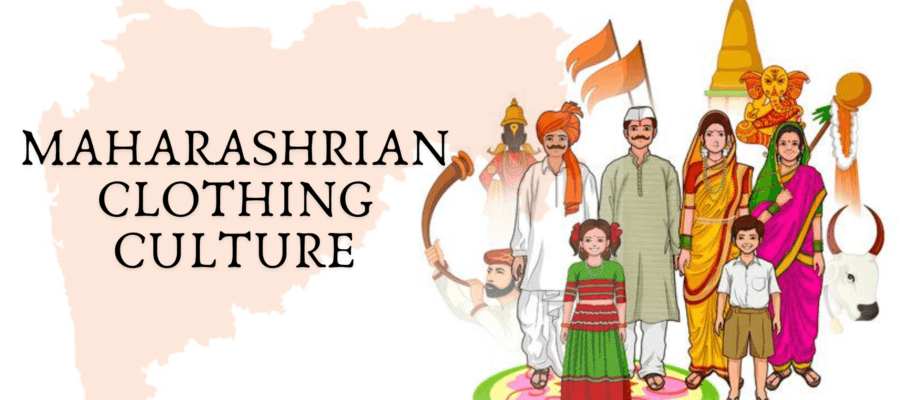
http://Viivek%20Ganore
Thanks for sharing useful information about Maharashtra.
THANK YOU
I have learn a few just right stuff here. Definitely worth bookmarking for revisiting. I surprise how a lot attempt you set to create this kind of fantastic informative web site.
I have been exploring for a little for any high-quality articles or blog posts in this sort of house . Exploring in Yahoo I ultimately stumbled upon this website. Studying this information So i抦 happy to show that I have an incredibly just right uncanny feeling I came upon just what I needed. I most certainly will make certain to don抰 omit this site and provides it a glance regularly.
Great ?I should definitely pronounce, impressed with your site. I had no trouble navigating through all the tabs and related info ended up being truly simple to do to access. I recently found what I hoped for before you know it in the least. Reasonably unusual. Is likely to appreciate it for those who add forums or anything, website theme . a tones way for your client to communicate. Nice task..
Thank you for your help and this post. It’s been great. http://www.ifashionstyles.com
Hey there! I’m at work surfing around your blog from my new apple iphone! Just wanted to say I love reading your blog and look forward to all your posts! Carry on the outstanding work!
Thank you for your articles. I find them very helpful. Could you help me with something? http://www.kayswell.com
Hi! This is my first visit to your blog! We are a collection of volunteers and starting a new initiative in a community in the same niche. Your blog provided us valuable information to work on. You have done a wonderful job!
Definitely, what a great site and informative posts, I definitely will bookmark your site.All the Best!
I was recommended this web site by my cousin. I’m not sure whether this post is written by him as no one else know such detailed about my difficulty. You are incredible! Thanks!
A further issue is really that video gaming became one of the all-time main forms of recreation for people of any age. Kids engage in video games, plus adults do, too. The particular XBox 360 is one of the favorite gaming systems for those who love to have hundreds of activities available to them, along with who like to experiment with live with others all over the world. Thanks for sharing your opinions.
Good web site! I truly love how it is easy on my eyes and the data are well written. http://www.ifashionstyles.com I am wondering how I could be notified whenever a new post has been made. I’ve subscribed to your RSS which must do the trick! Have a nice day!
Together with every little thing that appears to be developing inside this area, your opinions are actually rather exciting. However, I appologize, but I can not subscribe to your whole plan, all be it stimulating none the less. It would seem to us that your comments are actually not totally justified and in actuality you are yourself not really completely convinced of the point. In any case I did take pleasure in looking at it.
May I request that you elaborate on that? http://www.kayswell.com Your posts have been extremely helpful to me. Thank you!
You helped me a lot with this post. http://www.kayswell.com I love the subject and I hope you continue to write excellent articles like this.
Your articles are extremely helpful to me. May I ask for more information? http://www.ifashionstyles.com
Please tell me more about your excellent articles http://www.ifashionstyles.com
Thanks for posting. I really enjoyed reading it, especially because it addressed my problem. http://www.kayswell.com It helped me a lot and I hope it will help others too.
Your articles are extremely helpful to me. Please provide more information! http://www.kayswell.com
I want to thank you for your assistance and this post. It’s been great. http://www.kayswell.com
Thank you for your articles. http://www.kayswell.com They are very helpful to me. Can you help me with something?
Thank you for writing this article. I appreciate the subject too. http://www.kayswell.com
Thank you for your articles. I find them very helpful. Could you help me with something? http://www.ifashionstyles.com
Sustain the excellent work and producing in the group! http://www.hairstylesvip.com
May I have information on the topic of your article? http://www.ifashionstyles.com
You’ve been great to me. Thank you! http://www.ifashionstyles.com
The articles you write help me a lot and I like the topic http://www.kayswell.com
Thank you for sharing this article with me. It helped me a lot and I love it. http://www.ifashionstyles.com
Thank you for writing this post! http://www.goodartdesign.com
Thanks for your help and for writing this post. It’s been great. http://www.kayswell.com
This is very interesting, You’re a very skilled blogger. I’ve joined your feed and look forward to seeking more of your excellent post. Also, I’ve shared your site in my social networks!
Thanks for posting. I really enjoyed reading it, especially because it addressed my problem. http://www.kayswell.com It helped me a lot and I hope it will help others too.
Your articles are very helpful to me. May I request more information? http://www.hairstylesvip.com
Thanks for posting. I really enjoyed reading it, especially because it addressed my problem. http://www.goodartdesign.com It helped me a lot and I hope it will help others too.
The articles you write help me a lot and I like the topic http://www.kayswell.com
Thanks for your help and for writing this post. It’s been great. http://www.kayswell.com
Thank you for your articles. They are very helpful to me. May I ask you a question? http://www.hairstylesvip.com
Welcome for this useful information, I have bookmarked and written some things down. I will be checking back, from time to time too.
The articles you write help me a lot and I like the topic http://www.hairstylesvip.com
Thank you for writing this post. I like the subject too. http://www.kayswell.com
Your articles are very helpful to me. May I request more information? http://www.kayswell.com
Thank you for being of assistance to me. I really loved this article. http://www.kayswell.com
Thank you for being of assistance to me. I really loved this article. http://www.kayswell.com
Thank you for your help and this post. It’s been great. http://www.hairstylesvip.com
I enjoyed reading your piece and it provided me with a lot of value. http://www.ifashionstyles.com
Your articles are extremely helpful to me. May I ask for more information? http://www.kayswell.com
You helped me a lot with this post. http://www.kayswell.com I love the subject and I hope you continue to write excellent articles like this.
Please provide me with more details on the topic http://www.kayswell.com
You could definitely see your enthusiasm within the paintings you write. The arena hopes for more passionate writers like you who aren’t afraid to mention how they believe. Always follow your heart.
You’ve the most impressive websites. http://www.kayswell.com
Thank you for your articles. I find them very helpful. Could you help me with something? http://www.kayswell.com
You’ve been great to me. Thank you! http://www.kayswell.com
Thank you for your articles. http://www.kayswell.com They are very helpful to me. Can you help me with something?
Thanks for expressing your ideas. Something is that learners have a choice between federal government student loan and also a private student loan where it really is easier to choose student loan debt consolidation than through the federal education loan.
Your articles are very helpful to me. May I request more information? http://www.kayswell.com
Thank you for sharing this article with me. It helped me a lot and I love it. http://www.kayswell.com
Thank you for sharing this article with me. It helped me a lot and I love it. http://www.kayswell.com
Thank you for writing this article. I appreciate the subject too. http://www.kayswell.com
I’m so in love with this. You did a great job!! http://www.ifashionstyles.com
Thanks for posting. I really enjoyed reading it, especially because it addressed my problem. http://www.hairstylesvip.com It helped me a lot and I hope it will help others too.
It’s my opinion that a foreclosure can have a important effect on the applicant’s life. House foreclosures can have a Several to a decade negative effects on a borrower’s credit report. The borrower who may have applied for home financing or any kind of loans even, knows that your worse credit rating is actually, the more complicated it is to get a decent bank loan. In addition, it might affect a new borrower’s capacity to find a really good place to let or hire, if that gets the alternative houses solution. Good blog post.
You helped me a lot by posting this article and I love what I’m learning. http://www.kayswell.com
Good web site! I truly love how it is easy on my eyes and the data are well written. http://www.kayswell.com I am wondering how I could be notified whenever a new post has been made. I’ve subscribed to your RSS which must do the trick! Have a nice day!
Your articles are extremely helpful to me. May I ask for more information? http://www.hairstylesvip.com
You’ve been great to me. Thank you! http://www.ifashionstyles.com
Thank you for being of assistance to me. I really loved this article. http://www.kayswell.com
You helped me a lot with this post. http://www.kayswell.com I love the subject and I hope you continue to write excellent articles like this.
This is my first time pay a visit at here and i am really pleassant to read all at single place. http://www.kayswell.com
Right now it sounds like WordPress is the preferred blogging platform out there right now. (from what I’ve read) Is that what you are using on your blog? http://www.hairstylesvip.com
Great blog you’ve got here.. It’s difficult to find excellent writing like yours these days. I seriously appreciate individuals like you! Take care!! http://www.kayswell.com
Thanks for your help and for writing this post. It’s been great. http://www.kayswell.com
Thanks , I’ve just been looking for information approximately this topic for a while and yours is the greatest I’ve found out so far. But, what about the conclusion? Are you certain about the supply? http://www.kayswell.com
Your mode of explaining everything in this piece of writing is genuinely pleasant, every one be capable of simply be aware of it, Thanks a lot. http://www.kayswell.com
Nice post. I learn something new and challenging on sites I stumbleupon everyday. It’s always exciting to read through content from other authors and practice a little something from other web sites.
Appreciation to my father who informed me on the topic of this web site, this website is really amazing. http://www.kayswell.com
great points altogether, you simply received a logo new reader. What might you suggest in regards to your publish that you just made a few days in the past? Any positive? http://www.hairstylesvip.com
Thank you for the auspicious writeup. It in fact was a amusement account it. Look advanced to far added agreeable from you! By the way, how could we communicate? http://www.kayswell.com
You should be a part of a contest for one of the finest blogs on the net. I’m going to highly recommend this blog! http://www.hairstylesvip.com
I constantly emailed this blog post page to all my contacts, for the reason that if like to read it after that my friends will too. http://www.kayswell.com
Heya this is kinda of off topic but I was wanting to know if blogs use WYSIWYG editors or if you have to manually code with HTML. I’m starting a blog soon but have no coding know-how so I wanted to get guidance from someone with experience. Any help would be enormously appreciated! http://www.kayswell.com
I am really impressed with your writing skills as well as with the layout on your blog. Is this a paid theme or did you modify it yourself? Anyway keep up the nice quality writing, it is rare to see a nice blog like this one nowadays. http://www.kayswell.com
We’re a group of volunteers and starting a new scheme in our community. Your website offered us with helpful information to work on. You’ve done a formidable task and our whole community will be thankful to you. http://www.ifashionstyles.com
Your mode of explaining everything in this piece of writing is genuinely pleasant, every one be capable of simply be aware of it, Thanks a lot. http://www.ifashionstyles.com
Nice post. I learn something new and challenging on sites I stumbleupon everyday. It’s always exciting to read through content from other authors and practice a little something from other web sites.
Great blog you’ve got here.. It’s difficult to find excellent writing like yours these days. I seriously appreciate individuals like you! Take care!! http://www.kayswell.com
Right now it sounds like WordPress is the preferred blogging platform out there right now. (from what I’ve read) Is that what you are using on your blog? http://www.kayswell.com
Somebody essentially assist to make critically posts I would state. That is the first time I frequented your website page and to this point? I amazed with the research you made to make this actual put up amazing. Magnificent task! http://www.hairstylesvip.com
Hello there, You’ve done a great job. I will certainly digg it and personally recommend to my friends. I’m sure they will be benefited from this site. http://www.kayswell.com
I just like the valuable information you provide on your articles.I’ll bookmark your blog and test again here frequently. I’m quite certain I’ll be informed plenty of new stuff proper right here! http://www.kayswell.com Good luck for the next!
It’s actually very complex in this busy life to listen news on TV, so I just use world wide web for that reason, and get the newest news. http://www.kayswell.com
This piece of writing will help the internet visitors for creating new web site or even a blog from start to end. http://www.kayswell.com
Hello there, You’ve done a great job. I will certainly digg it and personally recommend to my friends. I’m sure they will be benefited from this site. http://www.kayswell.com
Hello, i read your blog occasionally and i own a similar one and i was just curious if you get a lot of spam feedback? If so how do you stop it, any plugin or anything you can recommend? I get so much lately it’s driving me insane so any help is very much appreciated. http://www.kayswell.com
I am actually happy to glance at this blog posts which consists of lots of useful information, thanks for providing such information. http://www.kayswell.com